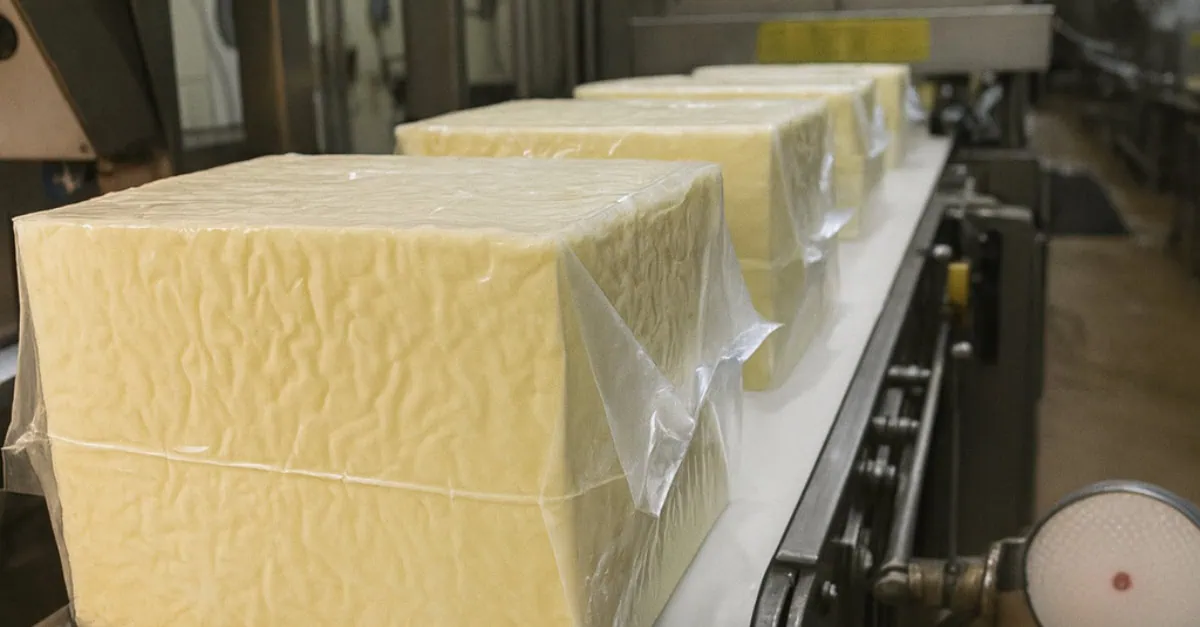July 9, 2025 – Market Analysis
European cheese markets are experiencing widespread pressure as supply exceeds demand across multiple product categories, forcing manufacturers and buyers to adopt dramatically different market strategies. The combination of increased production capacity, limited export opportunities, and currency headwinds is creating challenging conditions that are reshaping traditional trading patterns.
Divergent market approaches emerge amid uncertainty
Market participants are responding to current conditions with markedly different strategies, reflecting the complexity of today’s cheese trading environment. While some buyers continue active procurement, others are expressing regret over timing decisions, highlighting the difficulty of predicting market direction in volatile conditions.
Manufacturers are similarly divided in their approach, with stock levels varying significantly across producers. Those who anticipated slower summer demand now find themselves with limited inventory as prices decline, while others are actively seeking to move remaining volumes before conditions potentially worsen further.
The traditional spot market approach is proving less effective in current conditions, prompting many industry participants to adopt more forward-looking strategies. Some manufacturers are showing increased willingness to sell forward for late third-quarter and fourth-quarter delivery, preferring to secure premiums over current spot levels rather than risk further price deterioration.
Cheddar markets face regional supply imbalances
Cheddar markets are experiencing significant regional variations in supply-demand dynamics. European producers are dealing with increasing inventory levels as domestic demand remains subdued and export opportunities are limited by unfavorable currency conditions.
Irish and UK producers are particularly affected by high milk production volumes coinciding with reduced export competitiveness. Current pricing levels are approaching break-even points for many producers, creating pressure to move product even at minimal margins.
The global price structure shows substantial regional disparities, with US cheddar trading at significant discounts to both European and Oceanian origins. This pricing differential is creating export opportunities for US producers while challenging European competitiveness in international markets.
Production data indicates continued expansion in key markets, with increased output adding to available supply even as demand patterns remain uncertain. Recent auction results from major exporting regions have confirmed the downward pressure on pricing as increased volumes meet limited buyer interest.
Specialty cheese categories show varying resilience
Emmental markets are demonstrating relative stability compared to other cheese categories, supported by production capacity constraints that limit additional supply availability. Most third-quarter requirements have been covered by buyers early in the period, contributing to balanced market conditions.
The market structure for emmental remains more supportive than other cheese categories, though participants note that sustained weakness in other segments may eventually impact emmental pricing with a typical delay of several weeks.
Gouda markets are showing signs of strain, particularly in spot trading for immediate delivery periods. Prices for prompt shipment have declined substantially since early June due to increased offer pressure, while export markets remain largely inaccessible due to currency disadvantages.
Significant volumes remain unsold for upcoming delivery periods, though clear differences exist between producers in their willingness to move inventory. Some manufacturers are showing increased urgency to reduce stock levels, while others maintain firmer pricing strategies.
Mozzarella faces greatest pressure
Mozzarella markets are experiencing the most challenging conditions among major cheese categories, with some spot transactions already occurring below traditional price floors. Stock pressure varies significantly between manufacturers and traders, creating wide pricing ranges within the market.
The substantial discount between European and US mozzarella continues to influence trade flows, keeping more product within European markets while supporting US export opportunities to Asian destinations.
Despite many buyers having completed their procurement earlier, some are taking advantage of exceptionally low spot offers, indicating that price-sensitive demand still exists at current levels.
Currency and cost pressures complicate outlook
Current milk pricing levels throughout Europe are creating cost pressure for cheese manufacturers, with many categories trading at or below break-even points. This cost structure is limiting the downside potential for cheese prices while simultaneously making it difficult to maintain profitability.
Currency exchange rates continue to disadvantage European exporters, forcing producers to focus on domestic and regional sales rather than international markets. Export performance data shows negative growth in key categories, reflecting these competitive challenges.
The combination of elevated input costs and limited export opportunities is forcing producers to carefully balance inventory management with pricing strategies, leading to the diverse approaches currently observed in the market.
Forward market activity increases
The challenging spot market conditions are driving increased interest in forward contracting, with manufacturers willing to offer premiums over current spot levels to secure future sales. This shift toward forward pricing reflects the desire to avoid further spot market deterioration while providing some revenue visibility.
Buyers are similarly adapting their strategies, with some deliberately delaying purchases to benefit from potential further price declines, while others are securing forward coverage to ensure supply availability.
Access the full week 28 cheese market analysis on the Vesper platform here: https://app.vespertool.com/market-analysis/2084





